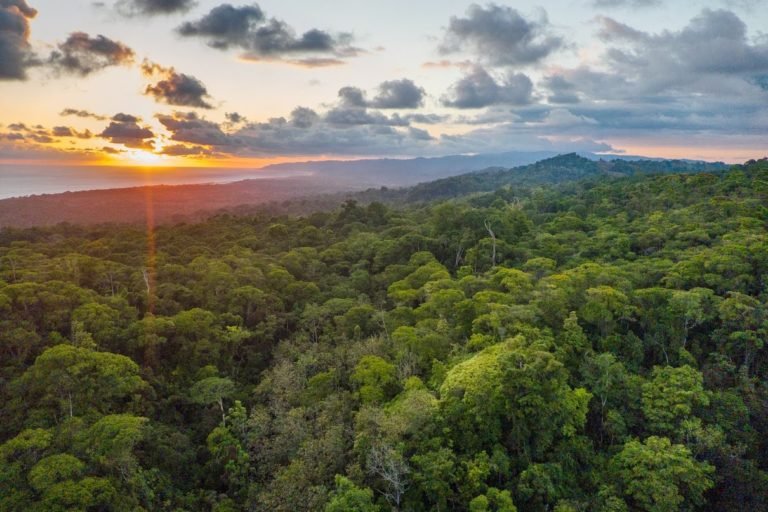There’s an urgent need to reduce — and remove — carbon in the atmosphere to stave off the most destructive impacts of climate change. But reducing methane emissions may be the fastest way to curb global warming.
One particularly crucial industry to focus on: the dairy sector, according to a new report from the Transform to Net Zero initiative, which includes companies like Starbucks, and Danone.
The livestock sector is responsible for roughly one-third of methane emissions in the US because of the manure from dairy operations. Accelerating the adoption of manure management technologies is “an immediate step” companies can take, the report authors say.
Among the most promising technologies are anaerobic digesters — enclosed structures that break down organic matter, such as manure. But the adoption of anaerobic digesters has been stunted in part because they are “large capital expenditure projects that require significant resources and infrastructure investments,” states the report. Many farms lack both the technical expertise and the capital required to invest in the technology.
Supply chain companies, many of which have already made net zero commitments, could offer a solution, and have “a critical role to play” in making anaerobic digesters more widely accessible.
Methane basics
Methane is the second most abundant anthropogenic (caused by humans) greenhouse gas after carbon dioxide, accounting for roughly 20% of all global greenhouse gas emissions. Its warming impact is 80-times more potent than carbon dioxide.
That said, methane is shorter-lived than carbon dioxide. Reducing methane emissions would therefore have “a rapid and significant effect” on atmospheric warming, according to the US Environmental Protection Agency.
Anaerobic digesters, which improve upon the covered lagoon concept, can capture methane from manure and use it to produce electricity, heat, fuel for vehicles, bioplastics, renewable natural gas, fertilizer and other products.
The technology isn’t without drawbacks, however. Barriers preventing anaerobic digesters’ wider use in dairy farm manure management include:
- Financial: While large farming operations can access funds from investors, small- to medium-sized farms don’t have “viable financing mechanisms” for this route, especially as most farmers already have an operating loan.
- Technical: Anaerobic digesters require a high level of technical expertise to manage given their complicated operation and maintenance features.
- Cultural and social: A lack of familiarity with anaerobic digesters, a hesitancy among farmers to adopt new practices, information overload and confusion, and a lack of community engagement all present challenges for widespread anaerobic-digester adoption.
- Policy: Lack of incentives for farmers to adopt sustainable practices in the US contributes to fewer farms using technologies like anaerobic digesters.
- Carbon accounting: Under current greenhouse gas accounting frameworks, companies can’t count the methane emission reduction if credits are sold outside the value chain.
Critics have also questioned whether the environmental benefits of anaerobic digesters justify the cost of implementing them. Also, groups like Food and Water Watch have expressed concern that anaerobic digesters could actually spur high-pollution factory farming in the US and hamper efforts to transition agriculture to more sustainable practices.
Two paths forward for dairy companies
Companies in the dairy supply chain, including consumer packaged goods companies, must address methane emissions in order to meet their net zero targets. The Transform to Net Zero initiative’s report offers two models for scaling the adoption of manure management technologies, such as anaerobic digesters.
- Scope 3 Stacking: In this model, a company and partners that operate in the same value chain share financing for manure management technologies and split carbon reduction claims. The model relies on “carbon insetting,” where a project is contained within the lead company’s supply chain.
- RNG and Methane Mitigation: Companies in the same value chain identify common geographic areas and do “aggregate purchasing” of renewable natural gas or renewable energy certificates. The benefit of this model is that it includes all manure and organic waste ADs. Because of that, a company could partner with a non-dairy entity, widening the pool of potential partners.
Both models also require “extensive collaboration among farmers, companies across the supply chain, and technology developers to establish a fair financing and benefit-sharing scheme,” the report states.
It adds that they would also benefit from “clearer accounting standards for carbon claiming for the agriculture, forestry and other land use sectors.”




![[Video] Easy Aerial’s Drone-in-a-Box Automates Crop Scouting](../ext/resources/images/2022/April/Easy-Aerials-Drone-in-a-Box-Automates-Crop-Scouting.jpg)







